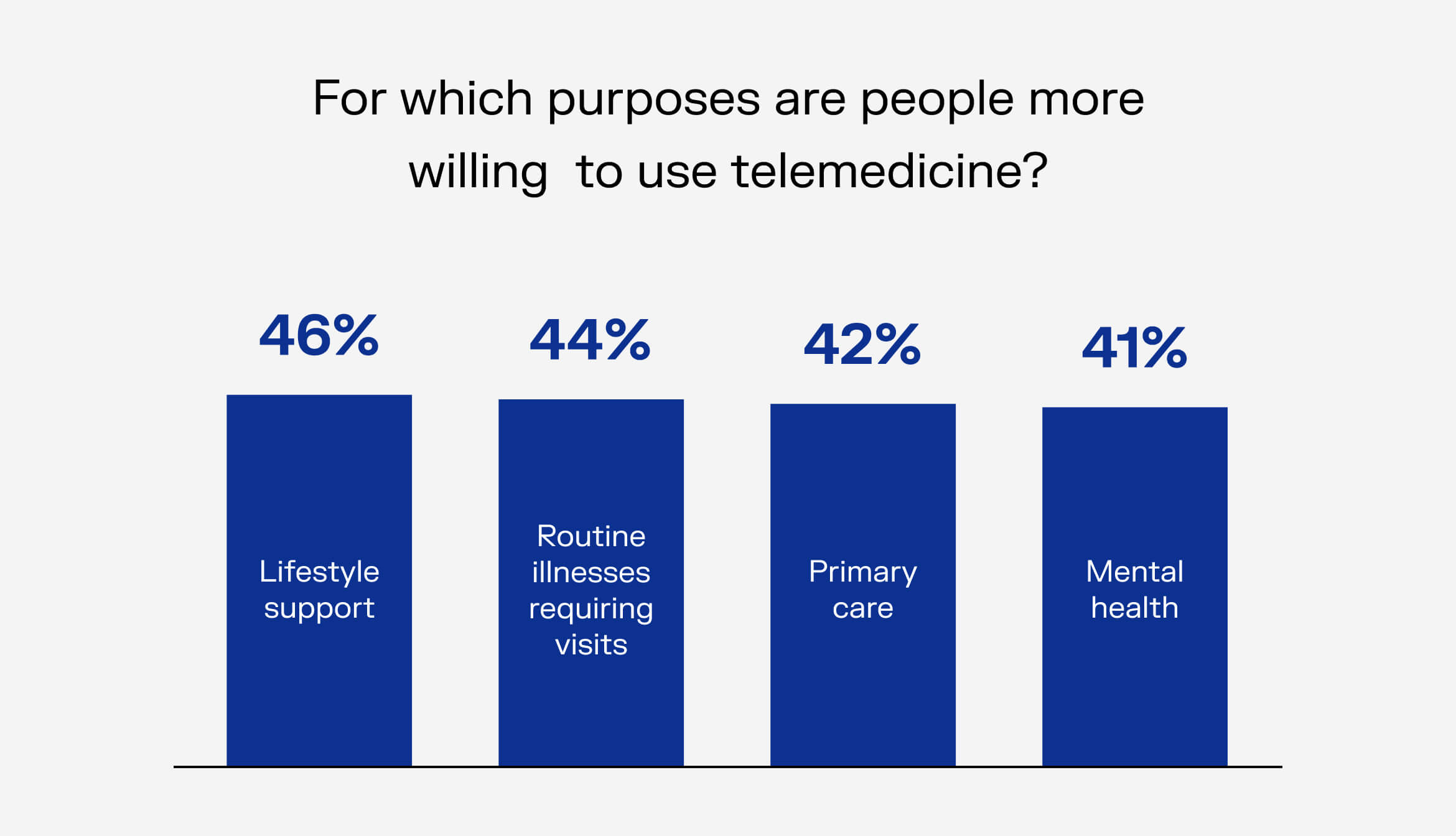- Virtual healthcare solutions are not merely a temporary answer to the Covid-situation but are now a significant part of a global change in the industry.
- Connections via specialized social networks are becoming increasingly important for healthcare and pharmaceutical businesses.
- Digital ‘remote’ options are transforming the traditional approach to clinical trials aimed at increased efficiency and better participant retention.
With several new coronavirus strains circulating, it is hardly likely that the healthcare industry will soon escape from this period of uncertainty. Specialists are turning to other forms of care, telehealth resources being among the most popular.
In April 2020 in the US, an HHS report showed that 43.5% of Medicare primary care visits relied on telehealth models rather than in-person visits. Among the top benefits of telehealth over in-person options is the reduction of contact between patients, healthcare workers, and other patients. Another significant issue is cost reduction. Additionally, tech advancements in wearables give healthcare providers the ideal opportunity to get real-time information on staying-at-home patient data.
During the M&A Community webinar, our panelists dived deeper into the topic of ‘remote’ healthcare and the other business trends in this segment.
Telemedicine as a long-term solution
Virtual healthcare may indeed become part of a long-term solution, as West Monroe’s national survey of 1,500 US residents show. 82% of the respondents said they are open to using telemedicine as an alternative to in-person appointments. For which purposes are people more willing to use telemedicine? The poll showed the following options:
- Lifestyle support (46%)
- Routine illnesses requiring visits (44%)
- Primary care (42%)
- Mental health (41%).
Among the least popular variants, the survey showed care for the elderly (24%), specialist visits (26%), and chronic disease care (28%). ‘What we are seeing is that telemedicine is a long-term trend, but it is rather only part of the solution rather than a replacement of traditional ways people treat healthcare,’ says Michael Buchanio, Senior Principal, Healthcare M&A, at West Monroe Partners.
‘Another big activity to note in the life sciences industry is the acquisition of patient-centric social networks and other types of websites that focus on therapeutic issues,’ he says. Such M&As allow pharmaceutical companies to reach out to patients and provide them with necessary information about medications, conduct surveys, or recruit patients to clinical trials. ‘Being more connected to these social networks is crucial.’
‘At-home’ care gets better with tech
‘What we’re seeing now is a direct pivot of how telehealth is being applied in very unique ways as Covid has arrived on the scene,’ says Troy Crabtree, Founder of Navita (TeleMate). As his company is on the provider side of telehealth services, he names the two significant trends happening ‘on the ground,’ namely adaption and adoption.
‘Two years ago, we had to have long discussions with primary care physicians’ or home health specialists to convince them that telehealth is necessary, and how it would benefit their service. Now, it is a completely different discussion. This technology is today part of the business and operational model. It is going to be a necessity in the future,’ Crabtree explains.
Navita’s founder mentions another significant trend in the industry, the so-called ‘at-home admission.’ That is, via digital services, a person can be admitted to the hospital while physically staying at home. ‘The level of touch, the level of care, in this case, is completely different from our historical approach to the home health environment,’ he adds.
This model is also suitable for fighting HAIS, healthcare-associated infections, especially during the Covid-situation, by reducing exposure. Virtual care may be applied even within facilities. For instance, Crabtree says, nurses’ stations could have connections and platforms to observe patients in their rooms, tackling the risk of spreading viruses, etc.
Assisted living is another developing trend of telemedicine. During the pandemic, patients in residence were heavily isolated. That resulted in growing levels of depression and anxiety. Virtual care for such patients helps to address the issues of behavioral health. For instance, platforms allowing residents to play games that maintain their cognitive abilities; or visiting online classes that help them to stay connected in the community.
More efficient clinical trials
Buchanio says that another trend in the healthcare M&A field aims to make clinical trials more adjusted to the ‘new normal’, as well as being more patient-friendly and efficient.
‘Why is this important? About 80 to 90% of clinical trials fail because they do not retain enough patients. Several studies show that a 30% dropout rate is rather common with most studies.’ Inconvenient scheduling or locations, a misunderstanding of instructions for processes are among the top reasons for patients to leave studies.
Digital technologies can tackle those issues, Buchanio believes, serving as a one-stop-shop for the participants. With the application of tools like EDC (Electronic Data Capture) and CTMS (Clinical Trial Management System), life sciences and pharmaceutical industries can substantially boost their R&D processes.
According to West Monroe, these platforms can:
- Cut recruitment time by 40%;
- Reduce the dropout rate of ca. 30% across trials;
- Increase data collection by up to 75x more (for instance, from wearables);
- Decrease costs by ~50% per participant for virtual trials compared with on-site practices.
‘Even the large players will be spending the next 2-3 years either rebuilding their digital architecture or buying other solutions and integrating them with their current platforms,’ our panelist concludes.




